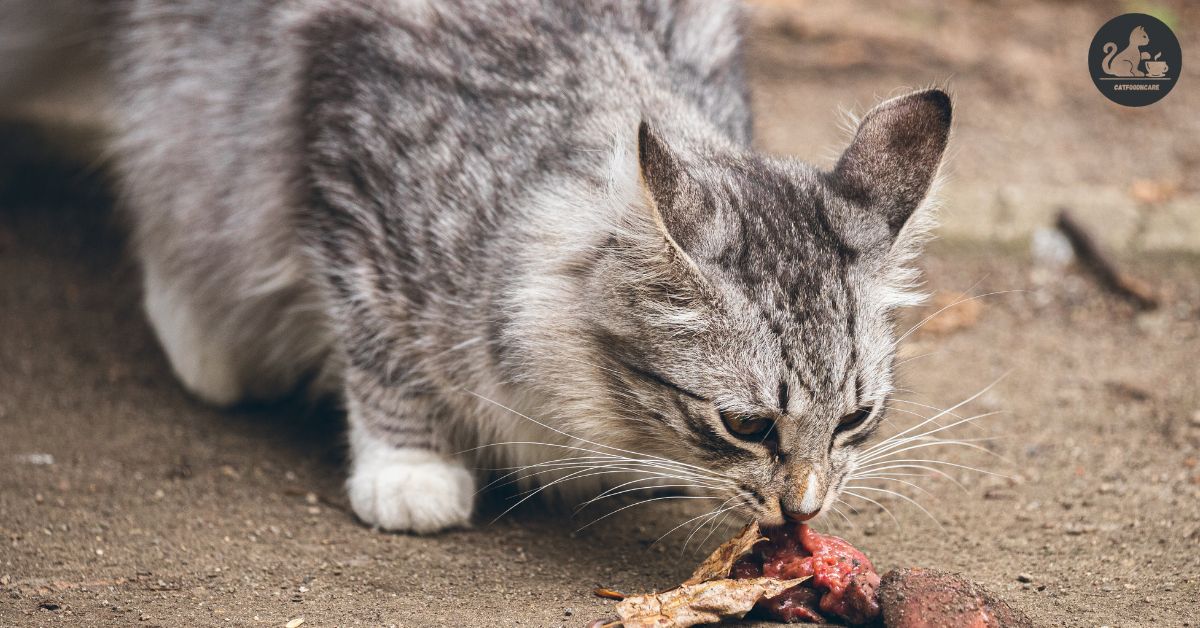As a cat owner, you might have wondered, “Can cats eat tilapia?” The answer is yes, but it’s not as simple as just tossing your feline a piece of raw fish. Tilapia, a popular type of white fish, is a great source of protein and contains beneficial omega-3 fatty acids. However, it’s important to remember that raw fish can contain environmental pollutants and may cause health complications if fed to cats regularly.
Instead, consider offering your cat cooked fish, which is safer and easier for their digestive systems to handle. This doesn’t mean you should start replacing your cat’s regular food with tilapia. Like all human food, it should be given in moderation.
Also, it’s crucial to remove any fish bones before feeding fish to cats, as they can cause choking or internal damage. Always consult veterinary advice if you’re unsure about introducing new types of food into your cat’s diet.
Remember, while tilapia can be a tasty treat and a good source of protein and fatty acids, it should not replace a balanced diet of high-quality cat food.
What Do Veterinarians Say about Feeding Tilapia to Cats?
Veterinarians generally agree that cats can eat tilapia, but it should be cooked and given in moderation. Tilapia is a white fish that can be a good source of protein for cats. It also contains Vitamin B1, Vitamin B2, and Vitamin B6, which are essential for a cat’s health. However, it’s important to remember that cats need a balanced diet, and fish alone cannot provide all the necessary nutrients.

One concern about feeding fish to cats is the risk of food poisoning from raw fish. Raw fish can contain harmful bacteria and parasites. So, it’s safer to feed your cat cooked fish. Also, make sure to remove any fish bones, as they can be a choking hazard.
Another issue is the mercury levels in fish. Some types of fish can have high levels of mercury, which can be harmful to cats. However, tilapia is considered a low-mercury fish, so it’s safer for cats to eat compared to other types of fish like tuna or salmon.
Lastly, while tilapia can provide some health benefits for cats, such as omega-3 fatty acids for heart health, it should not replace a complete cat food diet. Commercial cat food is specially formulated to provide all the essential nutrients that cats need. So, while it’s okay to give your cat tilapia as a treat, it should not be the main part of their diet. Always follow your vet’s advice when it comes to feeding your cat.
Can Cats Eat Tilapia?
Yes, cats can eat tilapia. Tilapia is a type of white fish that can be a good source of protein for cats. It also contains essential nutrients like Vitamin B1, Vitamin B2, and Vitamin B6. However, it’s important to remember that not all fish are safe for cats. Some popular types like raw salmon can contain high levels of mercury, which can be harmful to cats.
As a cat owner, you should also be aware that raw fish can contain harmful bacteria and parasites. That’s why it’s best to serve cooked fish to your cats. Cooking also makes it easier to remove fish bones, which can be a choking hazard.
While tilapia can provide health benefits like heart health and healthy skin due to its Omega-3 fatty acids, it should not be the only food in your cat’s diet. Cats also need other sources of animal protein and a balanced diet that includes commercial cat food.
Always ensure that your cat has plenty of fresh water, especially if you’re feeding them fish. The high protein content in fish can make cats thirsty.
Lastly, remember that every cat is different. Some might not like the taste of fish, while others might have food allergies. Always consult veterinary advice before making significant changes to your cat’s diet.
Nutritional Benefits of Tilapia for Cats?
Tilapia can be a nutritious addition to your cat’s diet. Here are some of the nutritional benefits:
- Tilapia is a great source of protein. Cats need protein for energy and to build and repair tissues. It’s also necessary for growth and development in kittens.
- This fish is rich in essential amino acids, the building blocks of protein. These are vital nutrients that cats can’t make themselves.
- Tilapia is a white fish, which are usually lower in fat than oily fish. This can be beneficial for cats needing a lower-fat diet for weight loss or health issues.
- It’s a good source of Vitamin B1, B2, and B6. These vitamins are important for a cat’s nervous system and help with digestion.
- Tilapia also contains Omega-3 fatty acids, which are beneficial for heart health and can help keep a cat’s skin healthy.
- Unlike raw salmon, which can contain harmful parasites, tilapia is usually farm-raised and is less likely to carry these risks.
However, cat owners should remember to cook the fish thoroughly and remove any bones before feeding it to their cats. Also, while tilapia can be a healthy part of a cat’s diet, it shouldn’t replace a balanced diet of high-quality cat food. Always seek veterinary advice if you’re unsure about feeding your cat tilapia or any other human food.
Potential Health Risks of Feeding Tilapia to Cats?
Feeding tilapia to cats can pose several health risks:
- Raw Fish: Raw tilapia may contain harmful bacteria and parasites that can cause food poisoning in cats. Always serve cooked fish to your feline friend.
- Fish Bones: Small, sharp bones in tilapia can cause choking or internal injuries. Always remove bones before feeding fish to cats.
- Environmental Pollutants: Farm-raised fish like tilapia can contain high levels of toxins and pollutants. Always choose fresh fish from reliable sources.
- Mercury Levels: All types of fish can contain mercury, which is harmful to cats in large amounts. Limit the amount of fish in your cat’s diet.
- Food Allergy: Some cats may develop an allergy to fish, causing skin issues and digestive problems. Monitor your cat for any adverse reactions after feeding them fish.
- Nutritional Imbalance: While tilapia is an excellent source of protein and omega-3 fatty acids, it should not replace a balanced diet. Commercial cat food is specially formulated to provide all the vital nutrients your cat needs.
- Taste of Fish: Cats can become addicted to the taste of fish, refusing to eat other types of food. This can lead to nutritional deficiencies.
- Excess Weight: Tilapia is high in fats. Feeding too much can lead to weight gain and related health issues in cats.
Always seek veterinary advice before introducing new food into your cat’s diet.
How to Feed Tilapia to Cats Safely?
Feeding your cat tilapia can be a great source of protein and essential fatty acids, but it’s important to do it safely. Here’s a step-by-step guide on how to feed tilapia to your cat safely.
Step 1: Choose the Right Fish
When choosing tilapia for your cat, opt for fresh, farm-raised fish. This type of fish is less likely to contain high levels of mercury or other environmental pollutants. Avoid feeding your cat raw fish as it can contain harmful bacteria and parasites.
Step 2: Prepare the Fish
Before you feed the fish to your cat, make sure it’s properly cooked. Raw meat can be harmful to cats, so it’s best to cook the fish thoroughly. Avoid adding any seasoning or additional ingredients, as some spices and herbs can be harmful to cats.
Step 3: Remove the Bones
Fish bones can be a choking hazard for cats, so it’s important to remove them before feeding the fish to your cat. Even small bones can cause problems, so be thorough in your inspection.
Step 4: Portion the Fish
Cats should only consume a small amount of fish relative to their overall diet. A good rule of thumb is to feed your cat about 1 gram of fish per pound of body weight. Too much fish can lead to weight gain and other health issues.
Step 5: Monitor Your Cat
After feeding your cat tilapia, keep an eye on them to ensure they’re not having any adverse reactions. Some cats may have a food allergy to fish, which can cause symptoms like vomiting, diarrhea, and skin issues.
Step 6: Consult Your Vet
Before introducing any new food into your cat’s diet, it’s always a good idea to consult with your vet. They can provide expert advice on the best diet for your cat’s specific needs and health conditions.
Remember, while tilapia can provide health benefits like essential amino acids and beneficial omega-3 fatty acids, it should not replace a balanced diet. Commercial cat food is specially formulated to provide all the vital nutrients your cat needs, so fish should only be an occasional treat.
Feeding your cat tilapia can be a healthy addition to their diet if done correctly. Just remember to choose fresh, farm-raised fish, cook it thoroughly, remove all bones, portion it correctly, monitor your cat’s reaction, and consult your vet. With these steps, you can safely introduce this tasty white fish into your feline’s diet.
Conclusion
Cats can eat tilapia, but it should be cooked and served in moderation. Tilapia is a good source of protein and provides essential fatty acids, including Omega-3 fatty acids that support heart health. However, it’s important to remove any fish bones before feeding fish to cats. Also, while tilapia can be a tasty treat and supplement to your cat’s diet, it shouldn’t replace a balanced diet of high-quality commercial cat food. As a cat owner, always provide fresh water for your pet and consult veterinary advice if you notice any health issues related to their diet.
Recent Posts
10 Best Canned Cat Foods of 2024, According to Veterinarians
Inside this expert-backed list of 2024's top wet cat foods, discover why veterinarians trust these brands for optimal feline nutrition.
Grab expert insights into the top-rated wet cat foods that veterinarians trust most, and discover why some brands outshine...

